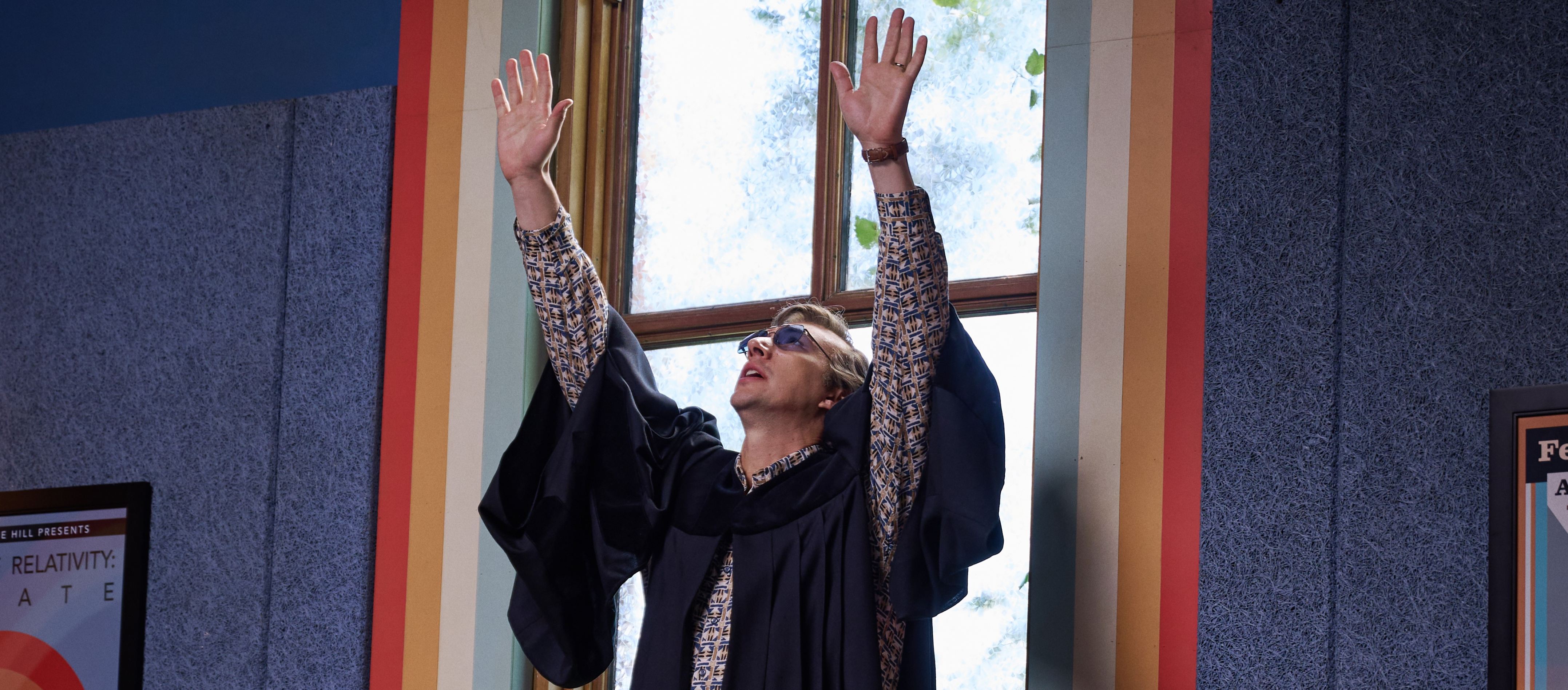Directed by Noah Baumbach, Netflix’s drama film ‘White Noise’ revolves around the life of Jack Gladney, a Hitler studies professor who teaches at the College-on-the-Hill. Jack’s life takes a wild turn when a Nyodene D explosion happens in his town named Blacksmith. Jack and his family try to run away from the town but he ends up getting exposed to the toxic black cloud that forms after the explosion, which kickstarts the “airborne toxic event.” Since the film depicts Jack’s life as a professor significantly, the viewers must be wondering whether College-on-the-Hill is based on an actual college. Let’s share everything you need to know about the same!
College on the Hill is Entirely Fictional
No, College-on-the-Hill is not a real college. The fictional college was conceived by Don DeLillo for the eponymous source novel of the film. The name of the college is seemingly connected to the phrase “City on a Hill,” derived from the teaching of salt and light in Jesus Christ’s “Sermon on the Mount.” The phrase is reused by Puritan leader John Winthrop in his sermon “A Model of Christian Charity,” which was preached before a group of colonists left England to end up in America. The phrase soon became the slogan of American exceptionalism.

Winthrop described a colony in New England as the “City on a Hill,” considering it the ideal puritan community for the world to revere the same and his country England to view the community as the perfect model. Multiple former presidents of the country, most prominently Ronald Reagan, then used the phrase to describe the country as an ideal state. Reagan, who served as the president of the country between the years 1981 and 1989, used the phrase in his Election Eve address “A Vision for America.” DeLillo seemingly named Jack’s institution College-on-the-Hill to bring out the hollowness of the idealization of the country, especially during the 1980s, the period in which the novel and film are set.
Like the “City on a Hill,” College-on-the-Hill is an ideal institution with admirable students and faculties on the outside. On the inside, however, the last thing the institution is ideal. The students and faculties of the college consider themselves ideal but fail to accept the harshness of reality. They approach death as a fictional spectacle that cannot happen in reality, which is established in the opening scene of the film, in which Prof. Murray Siskind screens footage of several crashes as a piece of profound entertainment. The institution also doesn’t focus on relevant subjects that can influence the survival of society but it gets obsessed with the study of popular and pop culture figures such as Hitler and Elvis Presley.
Through the College-on-the-Hill, DeLillo explores how idealization is a veil that hides the harshness of reality. The author depicts how the so-called ideal college is a nearly dead establishment that separates individuals from real life, connecting the same to the “City on a Hill,” an idealization that supposedly hid the concerns and fears that loomed over the country during the tenure of Reagan.
Read More: Why Are People Dancing at the End of White Noise, Explained


You must be logged in to post a comment.